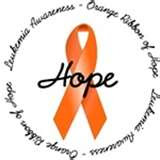1. Get registered in the bone marrow donor registry: http://www.marrow.org/JOIN/. There are many people who need a life-saving bone marrow transplant, but who don't have a match. Last month we heard about this sad story - an 11 year old girl with AML (leukemia), who passed away. She needed a bone marrow transplant and a perfect match couldn't be found. YOU could be someones match. It takes about five minutes to get signed up. Get registered and give someone hope! Our friend Rachel was able to find a donor, can you imagine if she was saved because of YOUR marrow? What an amazing gift for everyone involved!
2. Donate blood at your local Red Cross you can also go HERE if you're not sure where that is. You can donate blood or platelets at American Red Cross. A single platelet donation can provide enough platelets for a full therapeutic dose for a patient in need. In fact, some platelet donations yield enough platelets for two or three therapeutic doses. By contrast, it takes about five whole blood donations to produce a single therapeutic dose. Many patients who need platelets are undergoing chemotherapy or organ transplant and have weakened immune systems. A platelet dose from a single donor reduces the patient’s exposure to multiple donors and is therefore preferred by many physicians. During a platelet donation, a small portion of your blood (less than one pint at a time), is drawn from your arm and passed through a sophisticated cell-separating machine. The machine collects the platelets and safely returns the remaining blood components, along with some saline, back to you. After the donation you can resume your normal activities, avoiding heavy lifting or strenuous exercise that day.
According to the American Red Cross: every two seconds, someone in the US needs blood. Before McKall was diagnosed, I never could believe that number. I had no idea. But after going on this cancer journey with McKall and sitting in clinic watching blood transfusion after blood transfusion going on around us, that number is much more real to me now. McKall had 3 just in her 1st week of treatment. We have a friend Elena who has had multiple transfusions in just one week - and occasionally, her transfusion has been delayed because the blood bank didn't have the type of blood she needed. Or there's our cancer friend, Skyler, who has multiple platelet transfusions every day. And there's millions of other cases where people need blood. It is life-saving. And it can be really scary watching your sick child and being told that there isn't the blood they need available.
Some Facts About Blood Supply Needs and Blood Donation -from the American Red Cross
•One donation can save the lives of up to three people.
•The demand for blood transfusions is growing faster than donations.
•Shortages of all blood types usually occur during the summer and winter holidays.
•Less than 38% of the US population is eligible to donate blood. (So if you can, you can see that you're sorely needed!)
•It is possible to donate specifically only platelets or plasma. This process is called apherisis.
•Donated platelets must be used within 5 days of collection - new donations are constantly needed.
•Healthy bone marrow makes a constant supply of red cells, plasma, and platelets. The body will replenish the elements given during a blood donation - some in a matter of hours, and others in a matter of weeks.
•The average adult has about 10 to 12 pints of blood in his body. Roughly 1 pint is given during a donation.
•The average red blood cell transfusion is approximately 3 pints.
•A healthy donor may donate red blood cells every 56 days.
•A healthy donor may donate platelets as few as 3 days apart, but a maximum of 24 times a year.
You must be at least 17 years old, weigh at least 110 pounds, and be in good general health to donate. (Eligibility requirements may vary in some states and donation centers.)
Please, if you possibly can, get out and donate this holiday season. It's one of the best gifts you can give.
This Christmas, GIVE LIFE!



No comments:
Post a Comment